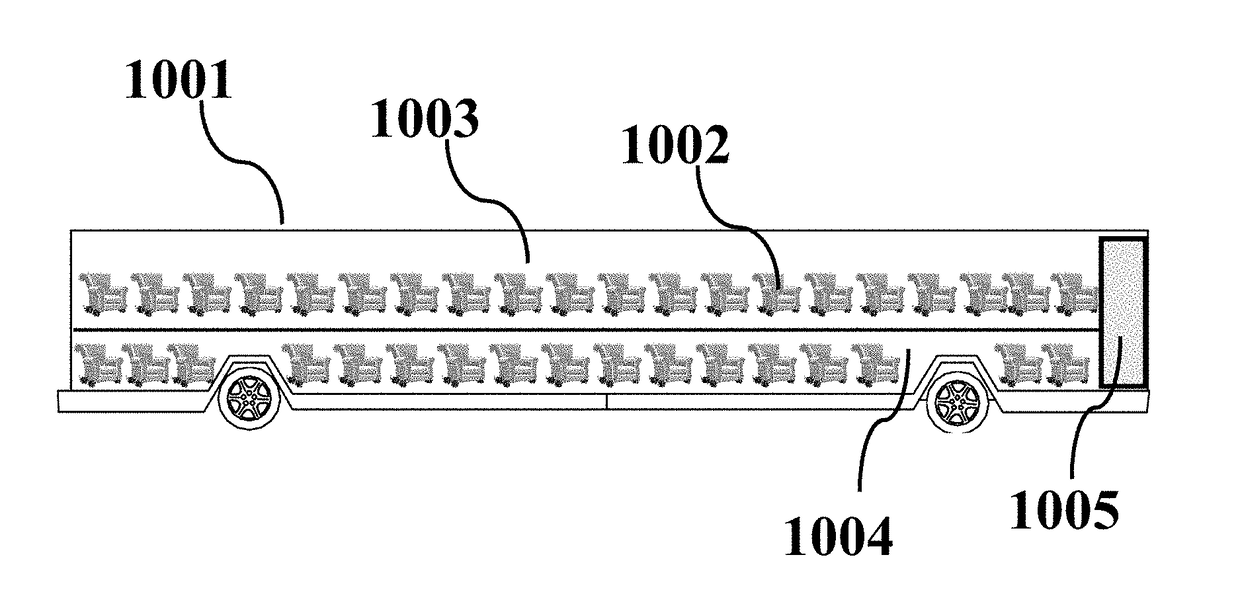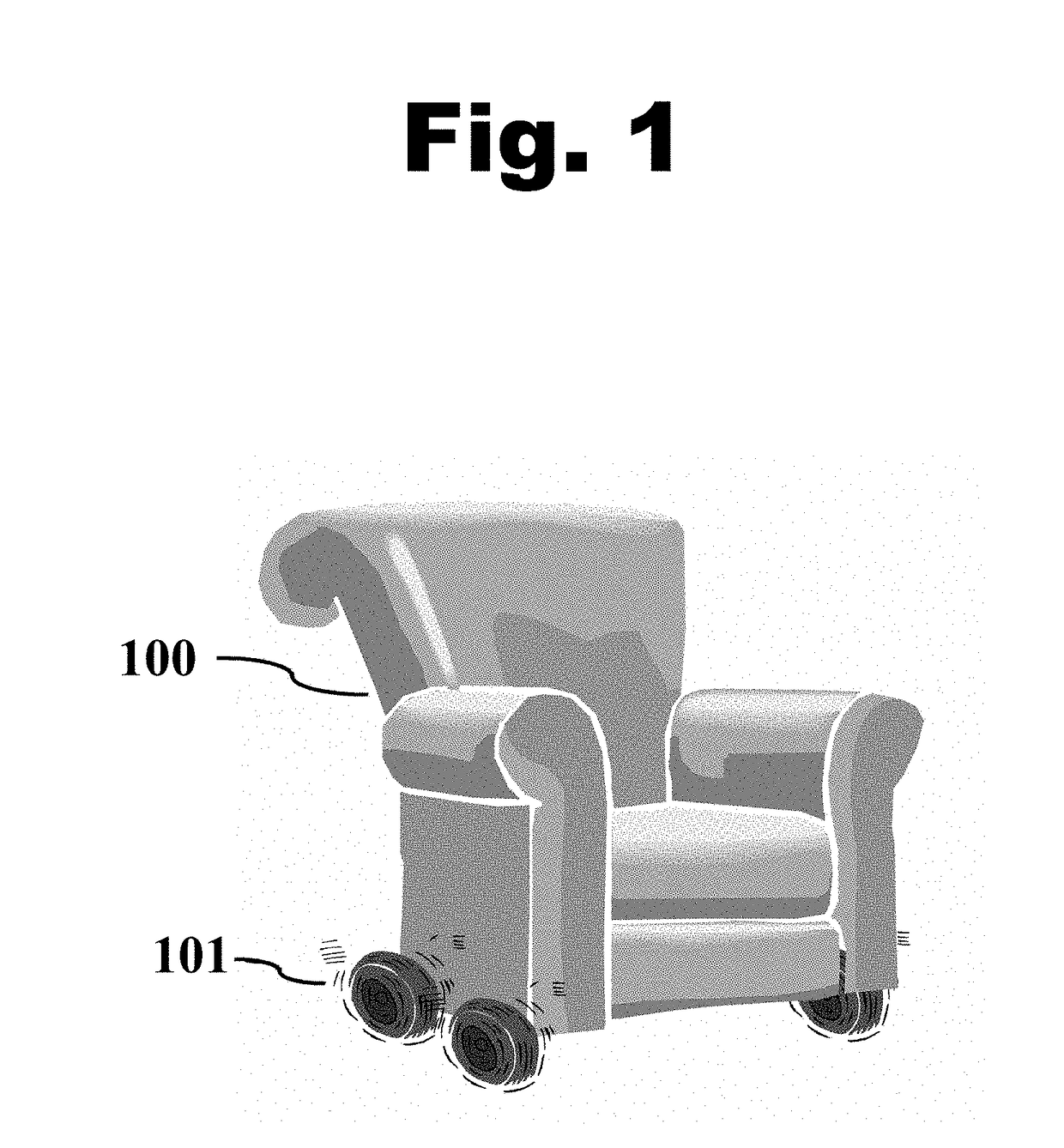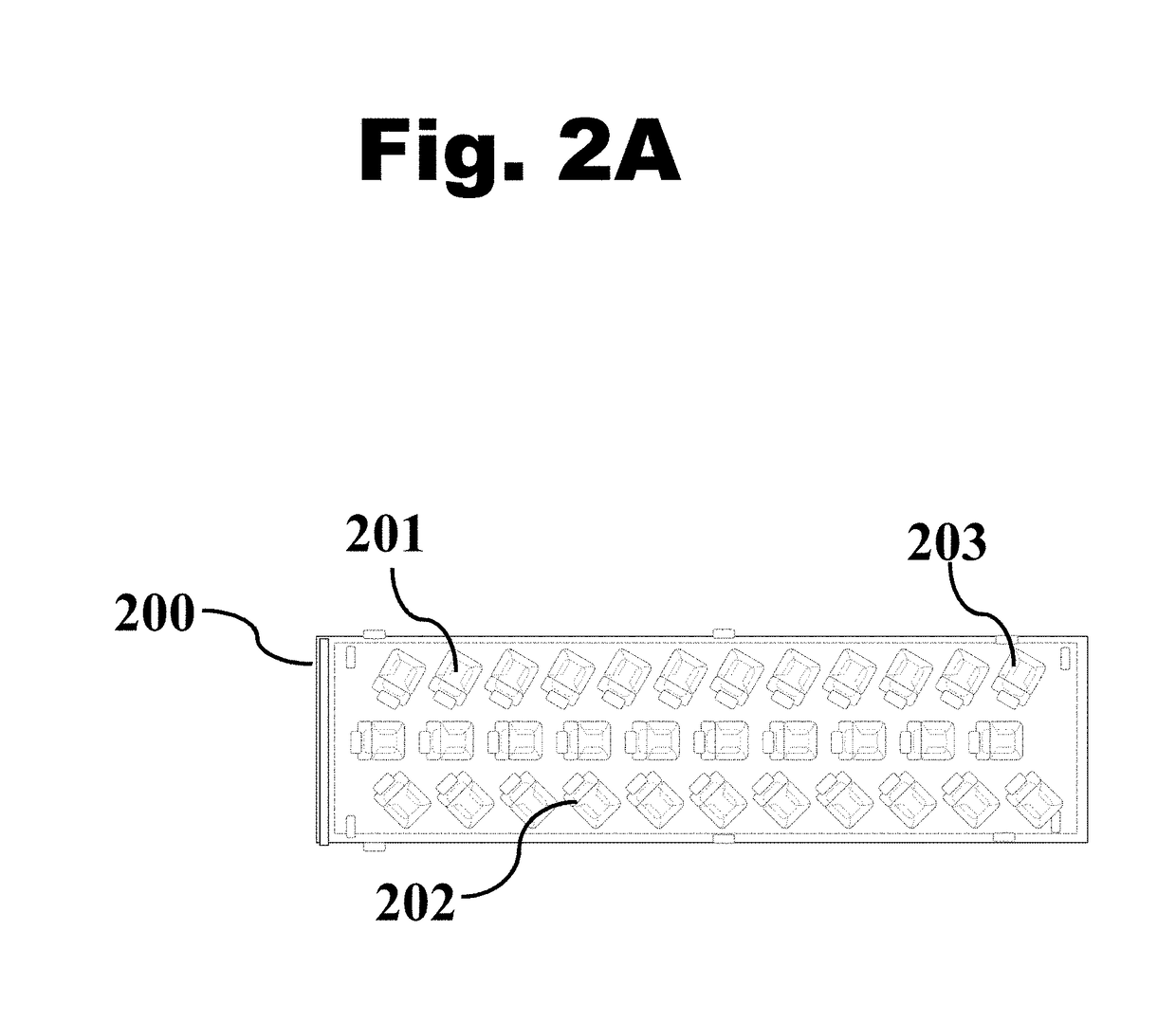Collective Transportation Systems
a transportation system and collection technology, applied in the direction of vehicle position/course/altitude control, process and machine control, instruments, etc., can solve the problems of time-consuming and thus costly, and the inability of vehicles to be loaded to their most efficient, and achieve the effect of reducing the number of vehicles and passengers
- Summary
- Abstract
- Description
- Claims
- Application Information
AI Technical Summary
Benefits of technology
Problems solved by technology
Method used
Image
Examples
Embodiment Construction
[0044]A collective transportation system is a transportation system comprising a plurality of container automated vehicles, a plurality of containable automated vehicles each of which may be contained in members of said plurality of container automated vehicles, and when a given said containable automated vehicle is contained within the enclosed interior of a given said container automated vehicle, said given containable automated vehicle may move about within said enclosed interior of said given container automated vehicle.
[0045]We discuss the characteristics of container vehicles below, but first introduce containable vehicles which are automated vehicles in their own right, and also such that they can be contained in container vehicles. These containable vehicles, which we will also call “pods” can move about under their own power for at least brief periods of time, and move about either outside or inside a container vehicle. Pods might transport people and / or things. A pod mainl...
PUM
 Login to View More
Login to View More Abstract
Description
Claims
Application Information
 Login to View More
Login to View More - R&D
- Intellectual Property
- Life Sciences
- Materials
- Tech Scout
- Unparalleled Data Quality
- Higher Quality Content
- 60% Fewer Hallucinations
Browse by: Latest US Patents, China's latest patents, Technical Efficacy Thesaurus, Application Domain, Technology Topic, Popular Technical Reports.
© 2025 PatSnap. All rights reserved.Legal|Privacy policy|Modern Slavery Act Transparency Statement|Sitemap|About US| Contact US: help@patsnap.com



